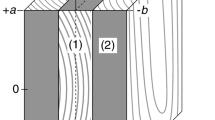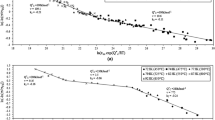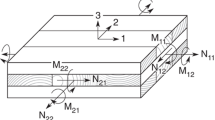Summary
Previous linear and curvilinear regression models for predicting the creep deflection of timber and timber products have failed to provide an adequately good fit. However, this paper shows that the 4-element (and to a lesser degree the 3-element) rheological model provides an extremely good fit to chipboard creep data.
A set of experiments has been carried out on the creep behaviour of five commercially-available types of chipboard under 3-point sustained loading at constant temperature and humidity. This range of board types encompassed three types of glue — UF, MF/UF and Pf- and was loaded at two stress levels-30% and 60% of the short term ultimate stress. The lifetime of these specimens ranged from 25 days to over 31/2 years until either failure occurred or the load was removed.
Creep curves based on 3- and 4-element rheological models have been fitted to the data from each specimen using an iterative least squares computer program which we developed. The validity of the two models is discussed, together with studies on the comparative behaviour of different board types and the use of the models as predictive tools.
Similar content being viewed by others
Explore related subjects
Discover the latest articles and news from researchers in related subjects, suggested using machine learning.References
BS 1811, Part 2. 1969: Methods of test for wood chipboard and other particle boards. BSI, London
Bryan, E. L. 1960: Bending strength of particle board under long term load. Forest Prod. J. 10: 200–204
Carré, J. 1967: Contribution à l'étude du fluage des panneaux de particules en atmosphère sèche et humide. Rapport d'activité, Laboratoire Forestier de L'Etat, Gembloux
Clouser, W. S. 1959: Creep of small wood beams under constant bending load. Forest Products Laboratory, Forest Service USDA, Report No 2150
Eriksson, L. 1967: Versuchsbericht Kriechen von Spanplatten. 17. Sitzung der Techn. Kommission der FESYP, Brüssel
Flugge, W. 1967: Viscoelasticity. Blaidell Publishing Co., Waltham, Mass.
Ganowicz, R.; Kwiatkowski, K. 1974: Die Untersuchungen des Kriechens mehrschichtiger Platten. Holztechnologie 15: 95
Gressel, P. 1967: Dauerstandverhalten von Sperrholz und Spanplatten im Wechselklima. Holz-Zbl. 93: 2191–2192
Gressel, P. 1968: Das Dauerstandverhalten von Holzwerkstoffen. Holz-Zbl. 94: 1523–1524
Gressel, P. 1972: Zeitstandbiegeverhalten von Holzwerkstoffen in Abhängigkeit von Klima und Belastung. Holz Roh-Werkstoff 30: 259–266, 347–355 and 479–488
Hunt, D. G. 1976: Rupture tests of wood chipboard under long term lading. J. of Inst. Wood. Sci. 7: (3) 13–21
Kollmann, F. 1961: Rheologie und Strukturfestigkeit von Holz. Holz Roh-Werkstoff 19: 73–80
Kratz, W. 1969: Untersuchungen über das Dauerbiegeverhalten von Holzspanplatten. Holz Roh-Werkstoff 27: 380
Kufner, M. 1970: Das Kriechen von Holzspanplatten bei langzeitiger Biegebeanspruchung. Holz Roh- Werkstoff 28: 429–446
Lundgren, A. 1977: Determination of creep by short term loading. 36th Meeting of the Technical Commission of FESYP, Frankfurt
Pentoney, R. E. 1963: Time dependent mechanical properties of wood. In: The mechanical behaviour of wood, Ed. by. A. P. Schniewind, University of California, Berkeley. p. 96–104
Pierce, C. B.; Dinwoodie, J. M. 1977: Creep in chipboard. Part 1: Fitting 3- and 4-element response curves to creep data. J. of Materials Science 12: 1955–1960
Senft, J. F.; Suddarth, S. K. 1971: An analysis of creep-inducing stress in Sitka spruce. Wood and Fiber 2: 321–327
Szabo, T.; Ifju, G. 1970: Influence of stress on creep and moisture distribution in wooden beams under sorption conditions. Wood Science 2: 159–167
Ylinen, A. 1965: Prediction of the time-dependent elastic and strength properties of wood by the aid of a general nonlinear viscoelestic model. Holz Roh- Werkstoff 5: 193
Author information
Authors and Affiliations
Rights and permissions
About this article
Cite this article
Pierce, C.B., Dinwoodie, J.M. & Paxton, B.H. Creep in chipboard. Wood Sci. Technol. 13, 265–282 (1979). https://doi.org/10.1007/BF00356969
Received:
Issue Date:
DOI: https://doi.org/10.1007/BF00356969




